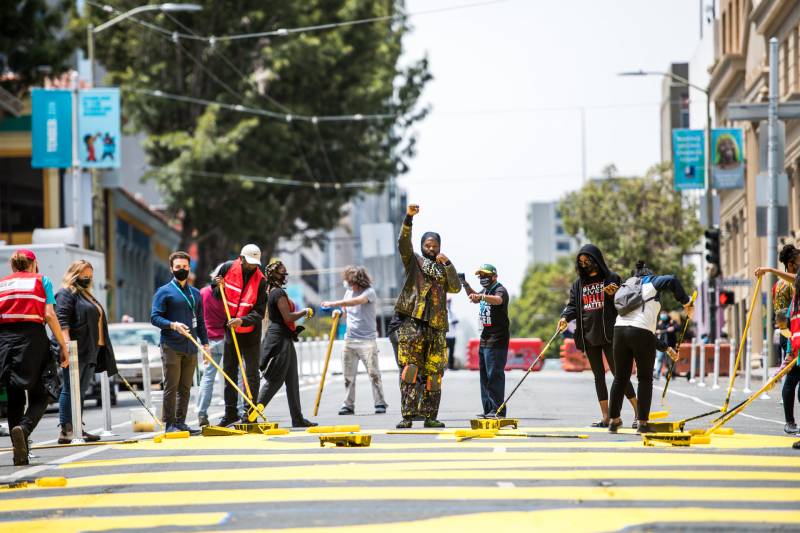Black leaders, housing advocates and community members in San Francisco painted “Housing Black" in giant yellow lettering across a Tenderloin neighborhood block on Monday to raise awareness about the need for long-term investments in housing for the city's Black residents.
According to the 2019 San Francisco Homeless Count and Survey, Black residents make up 37% of those who are experiencing homelessness, but comprise only 6% of the city's overall population. Del Seymour, co-chair of the Local Homeless Coordinating Board at City Hall and director of Code Tenderloin, said that disproportion is even greater in the Tenderloin.
"You all need to know the Tenderloin is a Black community. Walk down Turk and Taylor. Walk down Market Street. Walk down Ellis. Peep inside St. Anthony's. This is a Black community and we need to be housed," said Seymour, speaking at the mural painting.
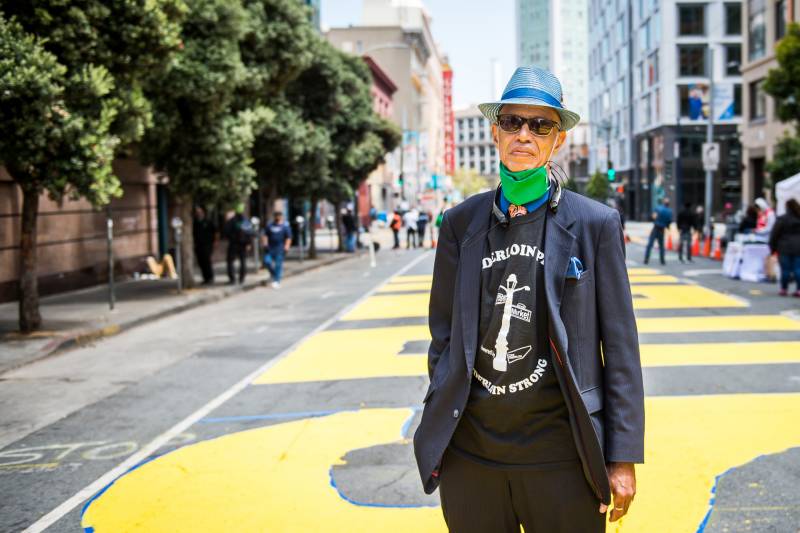
Due to lack of affordable housing and climbing eviction rates, Black renters have been disproportionately forced out of cities across California — including a decline of 43% of the population of San Francisco's Black residents since 1990.
“Let’s recognize the large number of unhoused Black people navigating and residing in the Tenderloin, and let’s hurry up and house these people with dignity," Seymour said. "This housing crisis is very rampant for Black people all throughout San Francisco and all across America. We got Black families living in tents, cars and shelters."
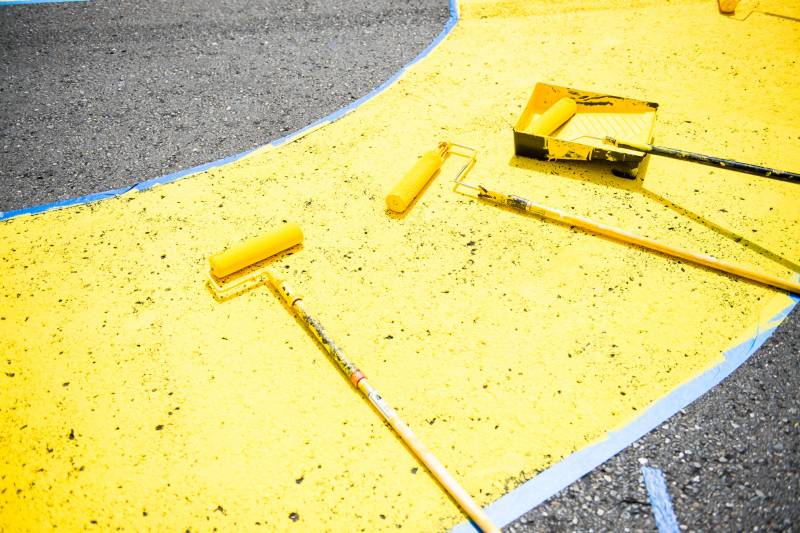
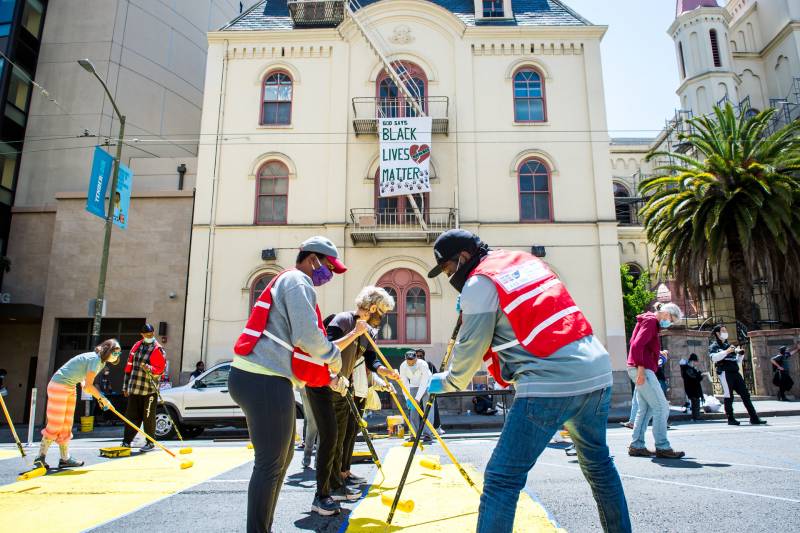
Artist Malik Seneferu worked with a team of community members to create the mural outside of St. Anthony's Foundation during its lunch service. The mural is 250 feet long and 30 feet wide, covering the 100 block of Golden Gate Avenue.
Seneferu — who experienced homelessness as a child living in the Tenderloin — has created several murals in a similar style around the Bay Area during the summer. “This communal discourse is a great way to have our voices heard,” he said.
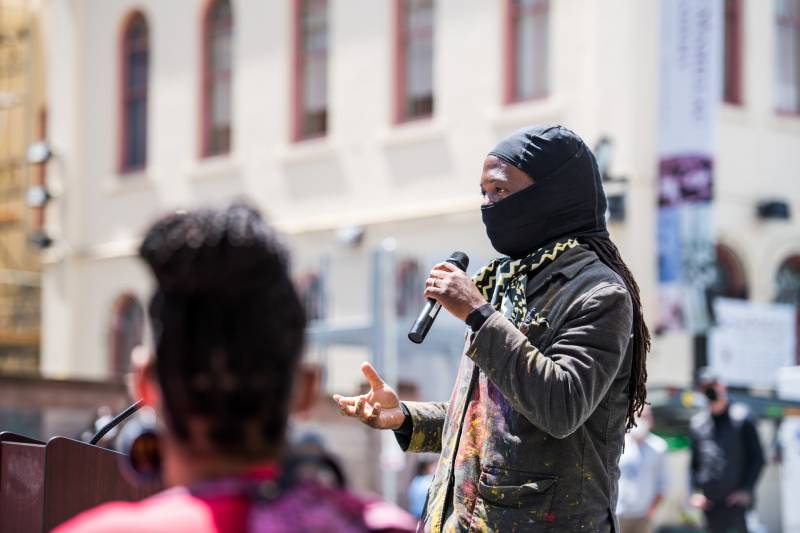
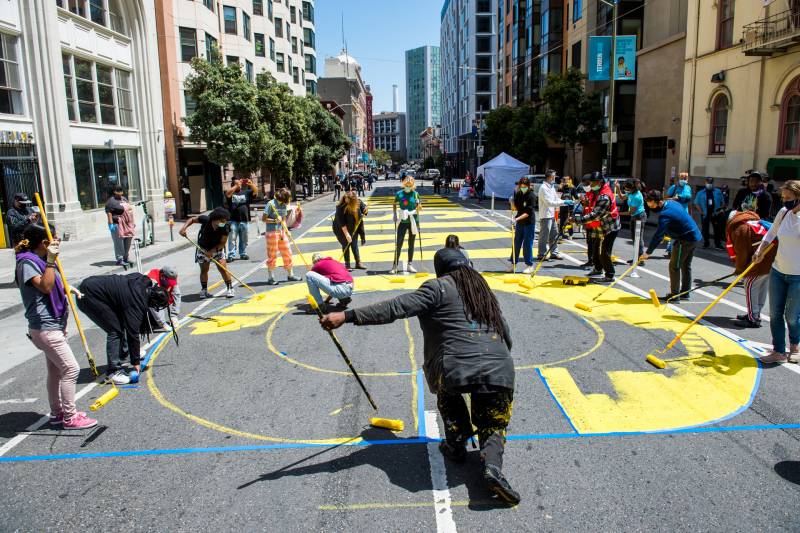
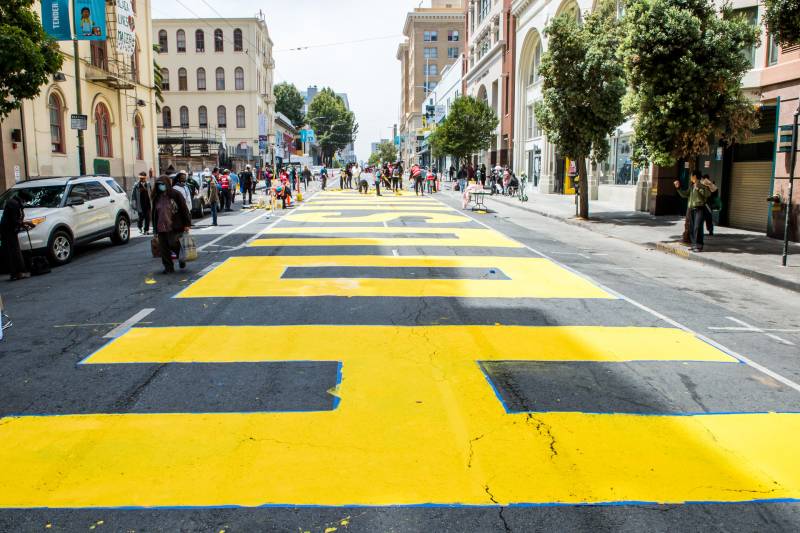
On Tuesday, District 6 Supervisor Matt Haney and District 10 Supervisor Shamann Walton plan to propose a resolution to the Board of Supervisors that acknowledges housing inequities for Black residents in the city, declaring anti-Black racism as a human rights and public health crisis. The proposal aims to dismantle institutionalized anti-Black racism by working alongside and centering the Black community.
"You cannot have a society that values Black people if you leave them out on our streets and our sidewalks," Haney said at the mural installation.
"And if you walk around this neighborhood, what you'll see is a society that has taken a wrong turn, that has left out far too many of our brothers and sisters and siblings on the street without a place to shelter during a pandemic."
